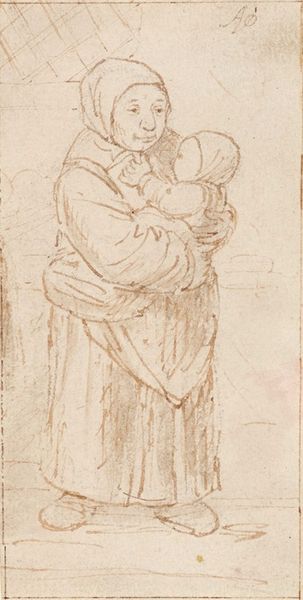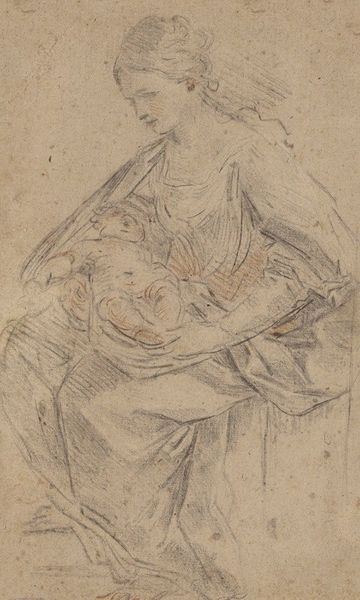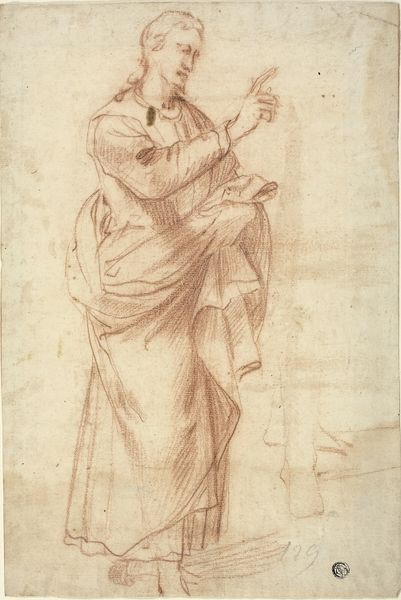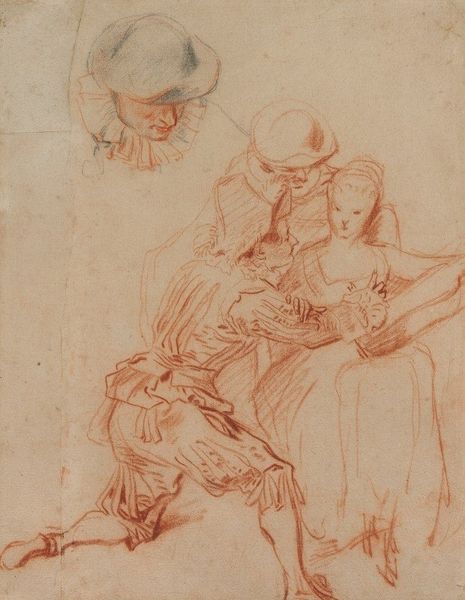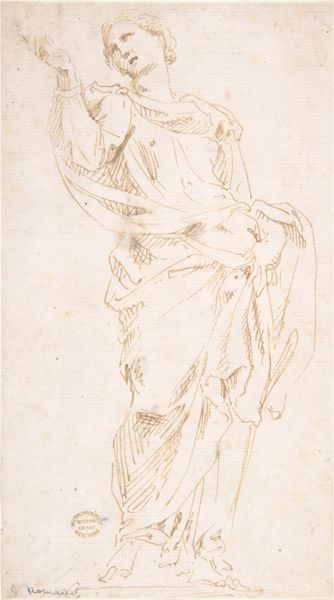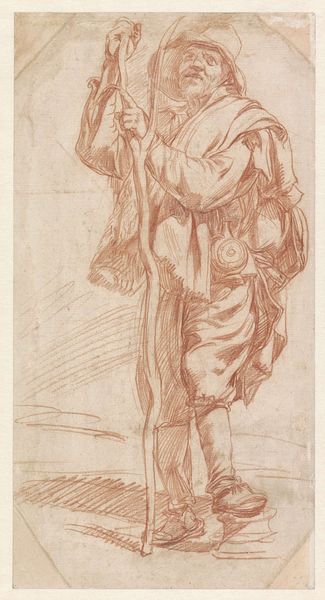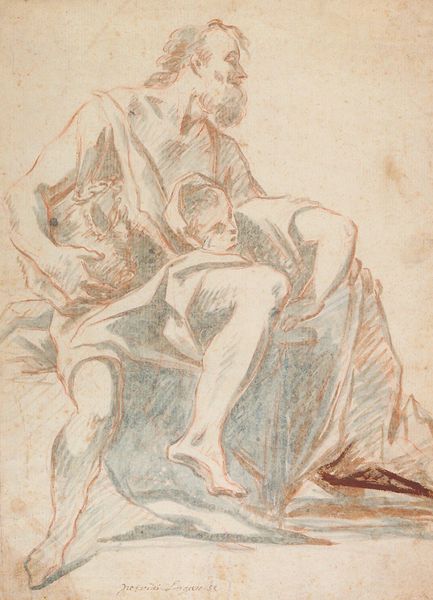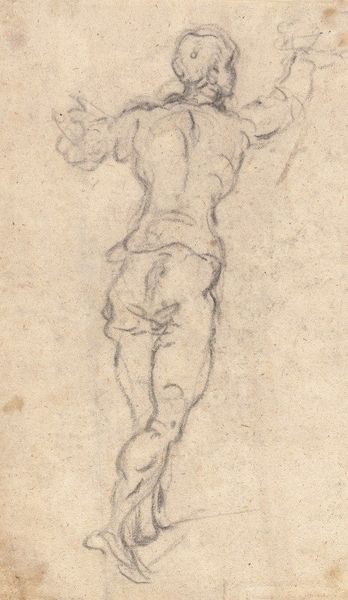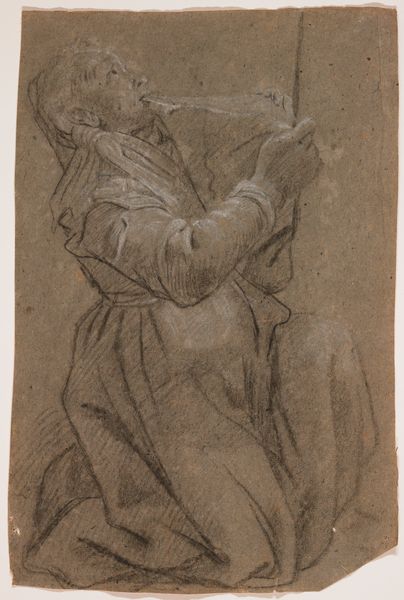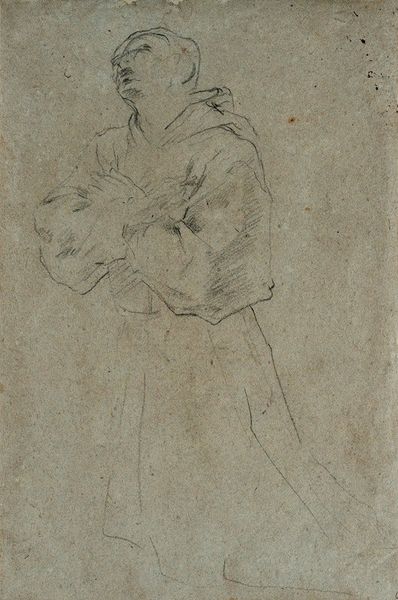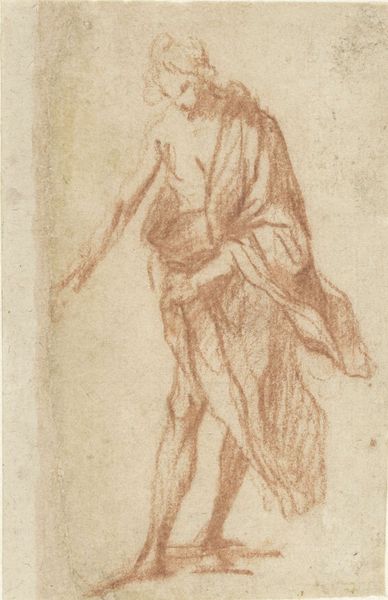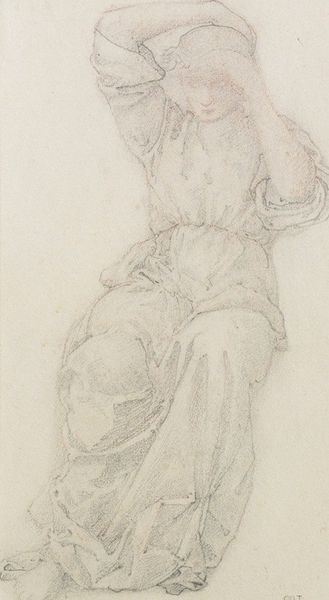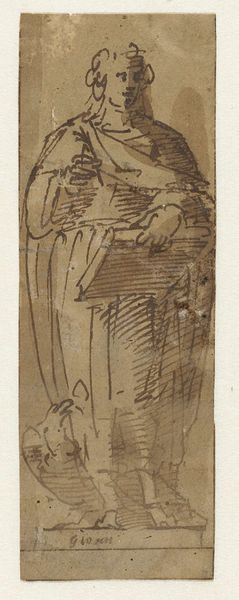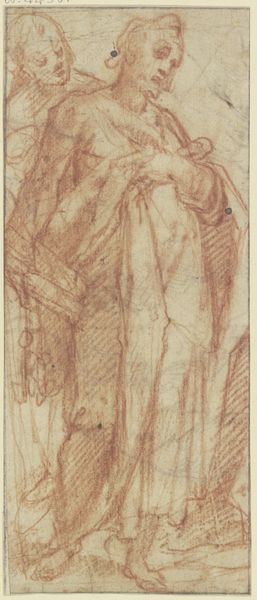
drawing, pencil
#
portrait
#
drawing
#
pencil
#
academic-art
Copyright: Public Domain: Artvee
Editor: So, here we have Benjamin West's pencil drawing "Woman and Child." It feels very intimate, almost like a stolen moment. What stands out to you when you look at this piece? Curator: What strikes me is the way this seemingly simple drawing fits into the larger tradition of idealized motherhood, a very marketable theme throughout history. Think of the Madonna and Child paintings from the Renaissance – how does West both embrace and subtly challenge that visual language in this work, and for what audiences? Editor: I see what you mean. The tenderness is there, but it's less formal, more natural. It seems less like a statement and more like a study of a genuine interaction. Curator: Exactly! The informal nature, the quick pencil strokes…It gives the work an accessible feel, which aligns with broader shifts in art consumption during that period. Consider the rise of print culture and the burgeoning middle class – were images like this playing a role in shaping sentimental values and notions of domesticity? Editor: So, it's not just about the woman and child themselves, but what their image represented within society? Curator: Precisely. Art doesn't exist in a vacuum. Even something that seems purely emotional is always tangled up in social and political contexts. How did this imagery reinforce, or perhaps even challenge, existing power structures of the time? Editor: It’s fascinating to think about how even a tender drawing can be analyzed through such a critical lens. It makes me rethink how I look at art! Curator: Absolutely, art reflects, refracts and at times redirects the societal norms around it. It’s been an intriguing conversation, showing how history shapes even the most intimate depictions.
Comments
No comments
Be the first to comment and join the conversation on the ultimate creative platform.
